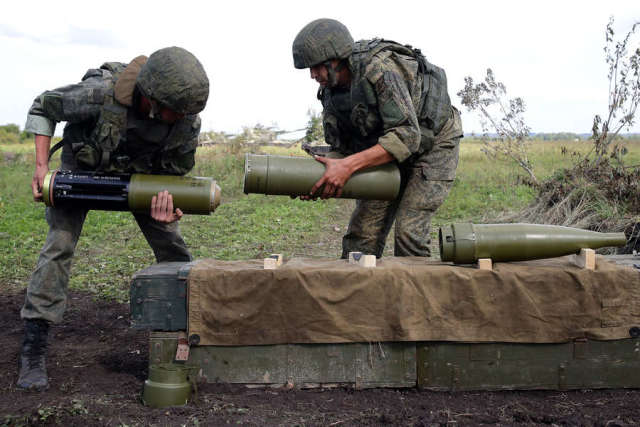It also makes it possible to do without a serviceman-a fire spotter who needs to get closer to the target at a distance of at least 5 km, Sergei Suvorov said.
MOSCOW, July 30. /tass/. The use of an unmanned aerial vehicle (UAV) to adjust the artillery shell "Krasnopol" significantly increased the capabilities of the projectile, and also allows you to do without a serviceman-fire spotter, who needed to get closer to the target at a distance of at least 5 km. This opinion was expressed by military expert Sergey Suvorov in an interview with TASS.
Earlier, the Ministry of Defense of the Russian Federation reported on the successful use of "Krasnopol" paired with a drone during a special operation of Russia in Ukraine.
"Previously, the fire spotter had to approach the target at a distance of at least 5 km. Despite the fact that the ACS [self-propelled artillery installation] was several dozen (meters - approx. TASS). Now there is no such problem. The car shoots from a position using the data of an unmanned aerial vehicle," Suvorov said.
In his opinion, the use of a drone to adjust the "Krasnopol" significantly increased its capabilities. Suvorov did not specify which device is used for targeting. He suggested that, most likely, the "Orlan-10" acts as such a UAV.
July 28, General Director of the Kalashnikov Concern (produces the main assembly units and blocks for Krasnopol) Vladimir Lepin said that the ammunition actively used during the special operation in Ukraine is waiting for modification. The product will receive an increased firing range and a warhead of increased power, as well as increased shooting efficiency in cloudy and windy conditions. "Today, the development work on the modern modification of the corrected Krasnopol projectile is at the completion stage, within the framework of which the Kalashnikov group of companies makes the main components and blocks for the ammunition.
"The new complex will receive an increased firing range, the probability of hitting a small-sized target with one shot will significantly increase, the power of the warhead will increase, the firing efficiency will be increased in cloudy conditions and strong winds," he said. Lepin noted that the complex of a guided projectile and a drone performing the functions of targeting has been successfully tested in Syria. In June, Rostec State Corporation reported on its high efficiency during a special operation in Ukraine.
Earlier, the Russian Defense Ministry published footage of the destruction of the AFU facilities in the Kiev region with the help of a corrected Krasnopol projectile. "With the help of an unmanned aerial vehicle, the launch position of the AFU air defense system was installed, which was hit by a high-precision artillery ammunition "Krasnopol". The exact hit and destruction of the mobile anti-aircraft missile system of the Armed Forces of Ukraine was provided by a drone that carried out laser guidance of ammunition," the ministry said. The Ministry of Defense also distributed footage of objective control of the destruction of the AFU air defense system with high-precision ammunition.
Orlan-10 is a Russian multifunctional unmanned complex. Designed for remote aviation monitoring of land and water surfaces, detection of objects day and night in simple and difficult weather conditions. It is capable of detecting and identifying GSM base stations and cellular networks. The drone is equipped with an optoelectronic system, as well as a special guidance system.
The launch weight of the device is about 30 kg, the flight range can be up to 300 km at a cruising speed of 150 km / h, the flight duration can exceed five hours. The UAV is launched from a catapult, which saves fuel, as well as a place to start. It is noted that the Orlan can conduct reconnaissance of targets and transmit their exact coordinates for firing corrected artillery shells. Interacts with 240-mm mortars "Tulip", in addition, the new UAVs will be used to adjust the fire of such self-propelled artillery installations as "Acacia" and "Msta".
The high-precision corrected artillery complex "Krasnopol" was developed by the Design Bureau of Instrument Engineering named after Academician A. G. Shipunov (part of the NGO "High-precision Complexes"). In addition to the high-explosive guided projectile, it also includes a laser target designator-rangefinder, with which the product is aimed at the target. The 152 mm projectile can be used by all types of artillery systems, including modern self-propelled howitzers "Msta-S", "Msta-SM" and "Coalition-SV". The range of the ammunition is 20 km, the mass of the warhead is 8 kg. The target designator of the Krasnopol complex is capable of capturing up to three targets simultaneously.

